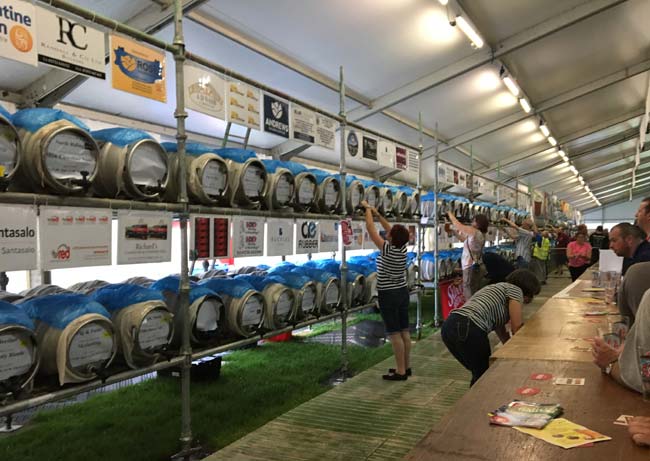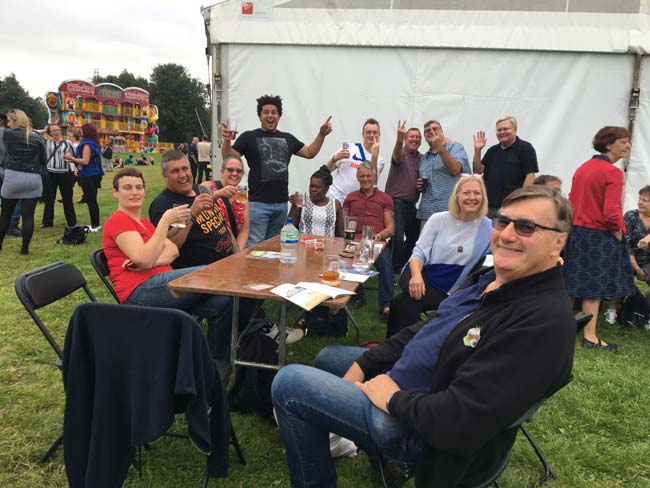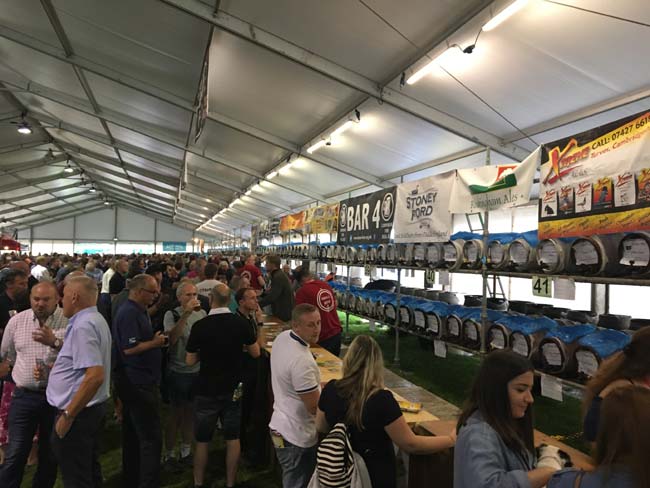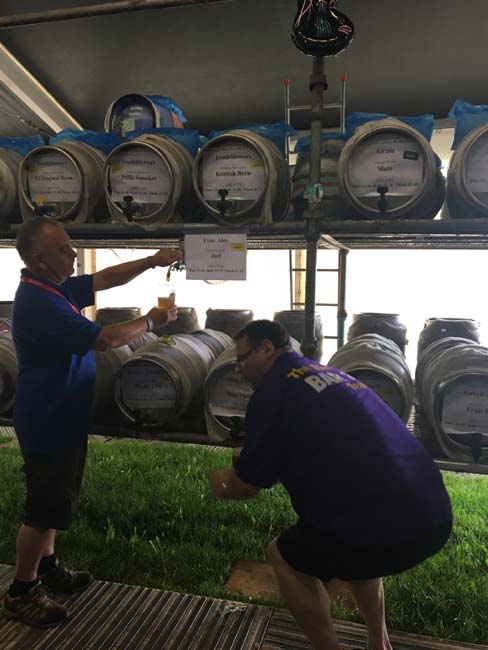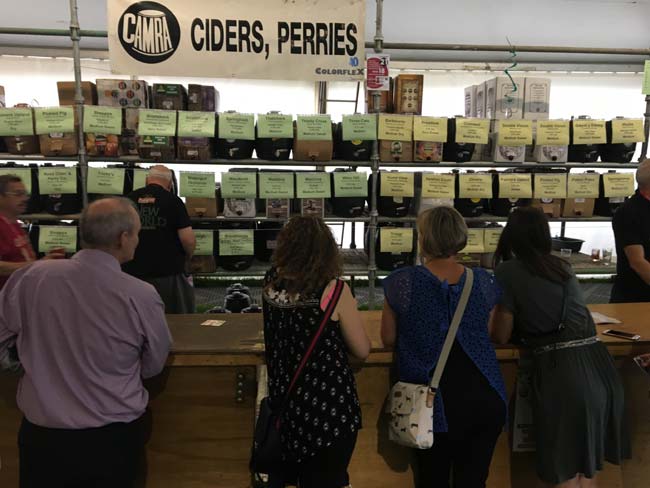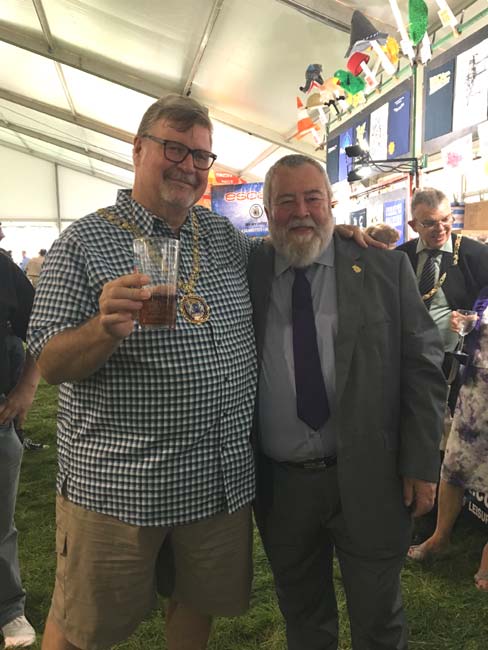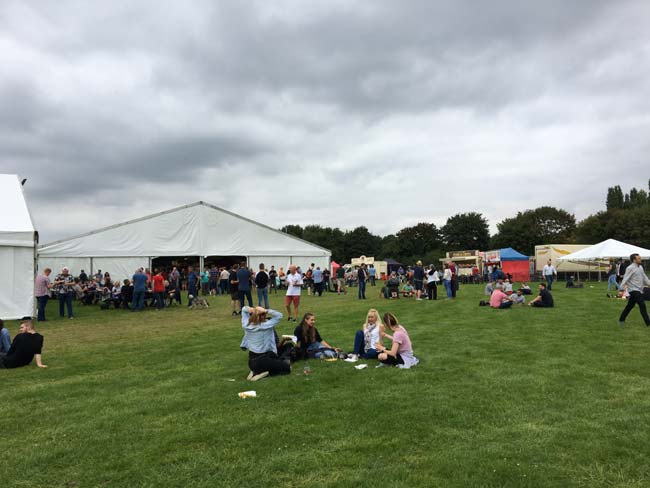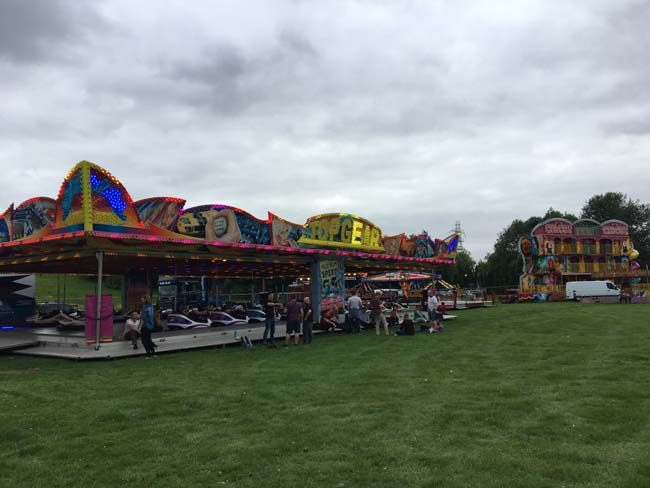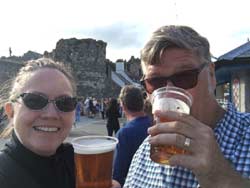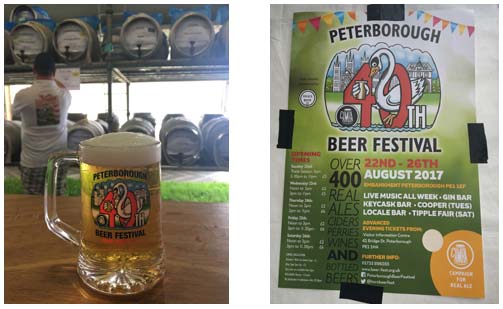
Recently my wife and I spent two weeks in the United Kingdom on vacation. This was not a beer-specific vacation and beer was not the reason we were there, but we love beer and it’s hard to imagine us gallivanting around Britain without immersing ourselves in the local beer culture. This is one in a series of posts about beer touring in the U.K.
After spending the first day and night of our vacation in London, we hopped aboard a train headed to Peterborough, a modest-sized town about 60 minutes north of London that hosts a huge beer fest every year. We were there for the 40th Annual Peterborough CAMRA Beer Festival, England’s largest outdoor beer festival, offering a selection of more than 400 cask ales from brewers across the U.K.
For the uninitiated, the Campaign for Real Ale (CAMRA) is an independent consumer organization headquartered in St Albans, England, which promotes real ale, real cider and the traditional British pub. In America, we refer to real ale as cask-conditioned beer. Different terminology is not the only disparity, but that’s another subject. CAMRA is the largest consumer group in the U.K. and boasts over 190,000 members. Among other important initiatives, CAMRA has been instrumental in the rebirth of real ale in the U.K. (hand-pumped, traditional English pub beer). As an American you might not even know that real ale was nearly extinct until CAMRA resuscitated the tradition. I encourage you to learn more about the organization’s very good work by visiting camra.org.uk.
The Peterborough Beer Festival, one of CAMRA’s larger annual events, typically takes place during the third week of August. We were there on Tuesday, the first day of the five-day festival, which was fortuitous planning on our part because it allowed us to enjoy the greatest selection of beer.
Before the festival we stopped for lunch at one of the town’s pubs where we met a boisterous and chuckling group of people who were also headed to the festival. They quickly became our partners in crime. They’d been to the event before, knew the lay of the land, and we were glad to be part of their clan, even if only for the afternoon.
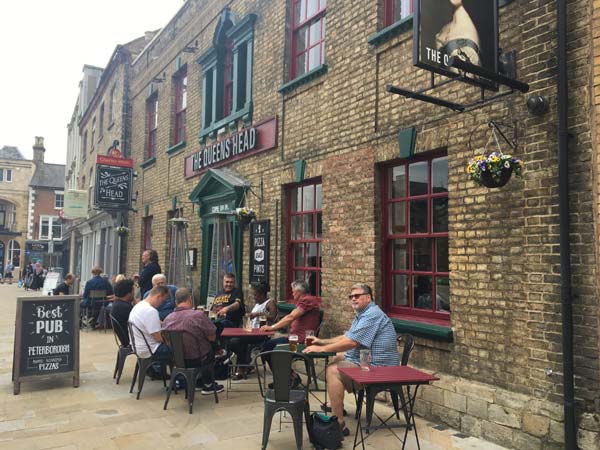
Little did we know, the group at the next table would soon become our partners in crime. Photo by Kim Sharpe Jones.
Before hitting the festival, our new cohorts wanted to take us to another pub for one more pre-festival pint. A beer or two with lunch, then another beer before the festival? You might think that sounds crazy, but beer in the U.K. is delightfully light on alcohol. You are hard-pressed to find anything above 5.0 ABV, especially when you’re talking about real ale. Most beers clock-in at 3.5 to 4.8 percent ABV. This takes some getting used to for American craft beer drinkers, but it doesn’t take long for you to appreciate the virtues of these less-inebriative beers. British brewers have mastered the art of creating rich, flavorful beers at lower gravity.
When we arrived at the festival grounds, we were impressed with the sheer magnitude of the thing. First up, we bought our glassware, which was available in two sizes–a full, proper pint or a smaller commemorative glass. This was, essentially, the price of admission.
Inside the enormous tents, firkins were lined up from end to end, stacked two high and two deep, on racks that stretched on forever. It was glorious. They poured samples in three sizes: third pint, half pint, and full pint.
More than 150 breweries were represented at this event. The beer selection was entirely overwhelming. Over 400 beers! We relied on our new friends and Twitter for suggestions, but in the end we just wandered, sampled, and strained to maintain some level of sobriety.
Different from typical American beer festivals, there were no tokens or drink tickets. You paid cash for each beer. There was no uniform pricing: each beer had its own price, which was posted on the firkin itself. While they pour your beer, you get ready to pay. Wisely, people tended to pay with exact change. You might not expect it, but things went smoothly and if there were any lines, they moved quickly.
In addition to gobs of cask beers, the festival also had a cider table serving over 90 cask-conditioned ciders and perries. We learned that in England cask-conditioned ciders are available in boxes, similar to what we think of as a box-of-wine only bigger.
There was a gin table as well – a gin bar. The Brits take their gin very seriously. When visiting, I highly recommend trying a good a G&T made with a local, craft gin and a high quality tonic. If you’re drinking Beefeater and Schweppes, you’re doing it wrong.
Beyond that, there was a Keycask Bar. What is a keycask? It’s where tradition meets technology. It’s a way to serve cask-conditioned beer without using a hand-pumped tap (beer engine) or gravity (firkin). It’s like a keg without the need for CO2. Google it if you want to know more.
At one point, I noticed a man wearing an enormous, seemingly heavy necklace and recognized it as a livery collar, a ceremonial chain worn by people of some importance at events like this. In this case, it was worn by the honorable John Fox, mayor of Peterborough. One of the mayor’s handlers was kind enough to introduce me as “the writer from America” and the mayor even let me wear the collar for a few minutes. It was heavy. Solid gold, I was told. Quite an honor!
As I mentioned, the tents were enormous, with plenty of room for beer service as well as beer drinking. Additionally, there was plenty of space outside the tents. Like most beer festivals, the event included live music, food vendors, and various other, vaguely beer-related vendors. Unlike most American beer festivals, this one also included carnival rides, just in case you wanted to give the bumper cars a spin after a few pints. Restrooms were provided in heated trailers with running water, which offered a slightly more civilized alternative to the typical portable toilets you find at many beer festivals.
In many ways, the Peterborough Beer Fest seemed very familiar, but in some ways it was completely foreign. Carnival rides at a beer festival? Can you imagine such a thing in America, where our litigious nature often disallows such fun?
Understandably, we opted to stay the night in town, recognizing that maintaining our sobriety at such an event might be an unrealistic goal. We stayed at the Bull Hotel in the heart of town, which we’d recommend highly. The pub at the hotel even had a couple of local cask ales for us to enjoy after the festival, not that we needed any more beer, but there you have it. We slept soundly in a lovely room and appreciated a great day-after-the-festival breakfast that provided tasty food to nourish our beer-taxed bodies and strong tea to clear our fuzzy heads.
From there, we walked up to the train station and continued north to York, the next stop on our vacation, where more beer adventures awaited.
